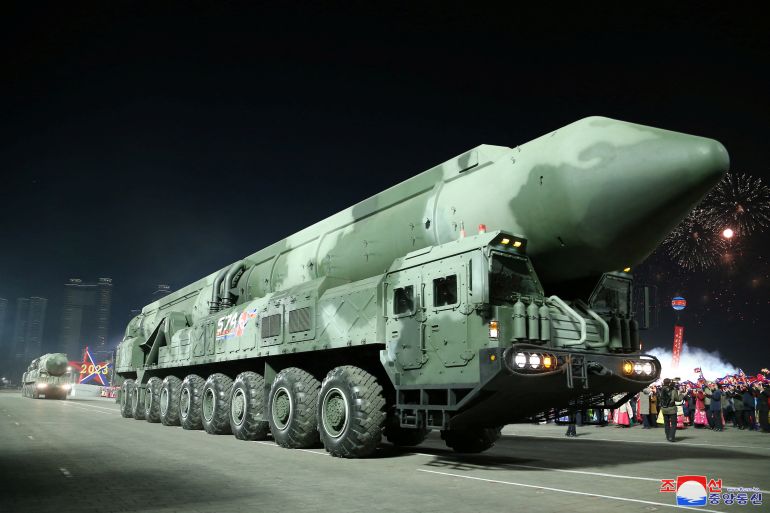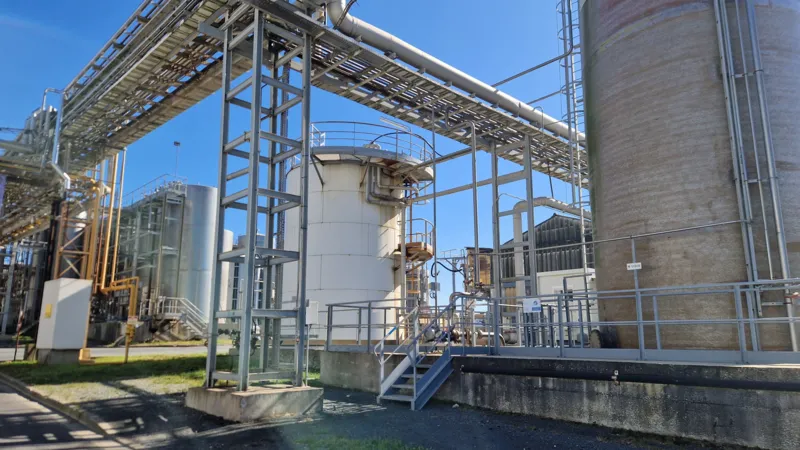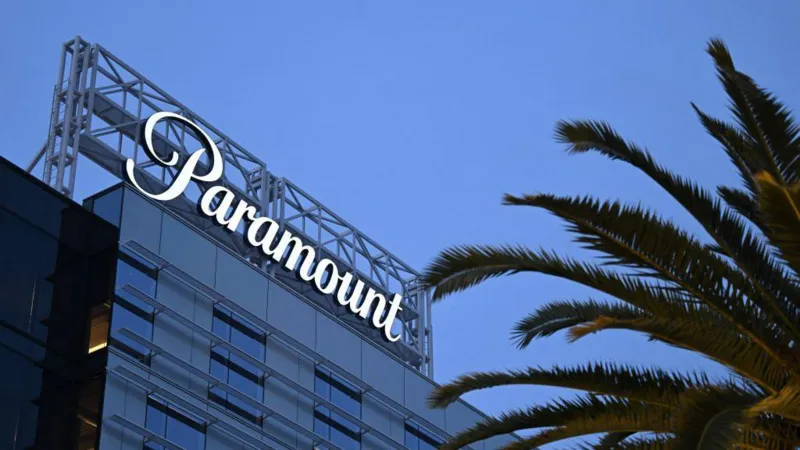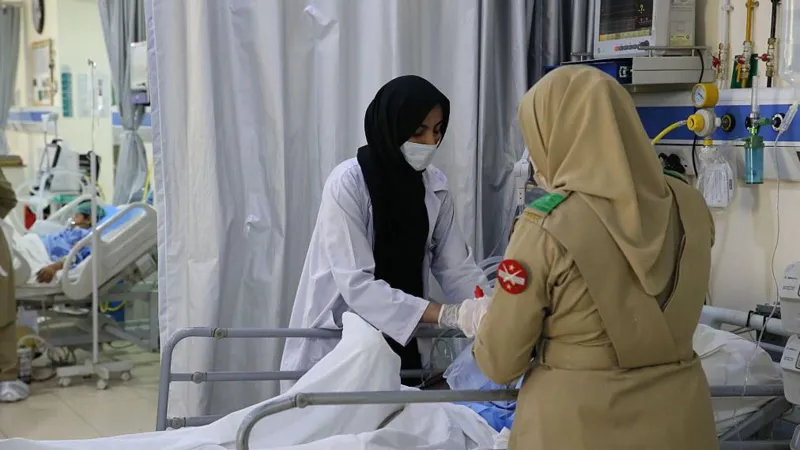North Korea shows off possible new ICBM at huge military parade
The parade in Pyongyang appeared to feature a new, solid-fuel intercontinental ballistic missile, analysts said.

North Korea has paraded its largest nuclear missiles through the capital Pyongyang during a nighttime ceremony that also appeared to feature what analysts believe is a new solid-fuel intercontinental ballistic missile (ICBM).
Leader Kim Jong Un, accompanied by his wife and young daughter, presided over the parade on Wednesday night to mark the 75th founding anniversary of North Korea’s army.
The country’s official Korean Central News Agency (KCNA) said the parade featured a variety of nuclear-capable weapons, including tactical nuclear missiles and ICBMs, which the state news agency described as crucial in supporting North Korea’s “power-to-power, all-out confrontation” against enemies.
The parade emphasised North Korea’s ability to face down its enemies “nuke for nuke, confrontation for confrontation!” KCNA said.
The huge display of military hardware comes after weeks of preparations involving large numbers of troops and civilians mobilised to glorify Kim’s rule and relentless push to cement his country’s status as a nuclear power.
NK News, which monitors events in North Korea, said that in addition to what appeared to be a new solid-fuel ICBM, the parade also featured at least 11 Hwasong-17 ICBMs. Just four Hwasong-17s had ever appeared at one time before during parades in 2020, which “suggests mass production of the new missile and heavy launchers is well underway”, NK News reported.
“This looks like an effort mainly to demonstrate new missile technology,” NK News said in a tweet.
North Korean military parades are closely watched by outside governments and experts as they often feature newly developed weapons the North intends to test or deploy.
Kim, wearing a black coat and fedora, attended the event with his wife Ri Sol Ju and daughter Kim Ju Ae, in what was the young girl’s latest of recent public appearances. The North Korean leader was featured smiling and saluting from a balcony as thousands of troops lined up in a brightly illuminated Kim Il Sung Square, named after his grandfather and the nation’s founder.
Among the systems on display at the parade were the country’s largest-yet ICBM, the Hwasong-17, dubbed the “Monster Missile” by some, followed by what some analysts said could be a new solid-fuel ICBM.
“Following the apparent Hwasong-17 ICBM pairs are four unidentified but apparently similarly sized canisterised systems,” Joseph Dempsey, a defence researcher at the International Institute for Strategic Studies, said on Twitter.
When the ICBMs appeared in the square, it prompted cheering by spectators, KCNA reported, adding that the parade also featured a “tactical nuclear operation unit”.
Ankit Panda of the United States-based Carnegie Endowment for International Peace said the canisterised ICBM might be the one seen during a 2017 parade, which has so far not been tested.
Most of the country’s largest ballistic missiles use liquid fuel, which requires them to be loaded with propellant at their launch site in a time-consuming process. The use of solid fuel potentially offers greater mobility for missiles and reduces the amount of launch preparation time. All of the ICBMs North Korea has flight-tested since 2017 used liquid propellants.
Developing a solid-fuel ICBM has long been seen as a key goal for North Korea, as it could make its nuclear missiles harder to spot and destroy during a conflict. It is unclear how close the suspected new solid-fuel ICBM could be to testing. North Korea has sometimes displayed mockups of missiles at parades.
Lee Sung-jun, spokesperson of South Korea’s Joint Chiefs of Staff, said during a briefing that the South Korean and US militaries were closely analysing the North Korean photos and reports to evaluate the weaponry displayed.
A view from the top shows perfect rows of troops marching behind a leader. Behind the leader and ahead of the troops are what look to be three men, one holding a flag. The stands behind them are filled with people all wearing the same dark green military gear.
Before the parade began, several waves of what appeared to be illuminated jets, turboprop aircraft and helicopters could be seen flying low in formation over the capital towards Kim Il Sung Square, according to videos seen by NK News. Several featured flares and fireworks were launched from the aircraft frame as they approached the square.
One set of aircraft flew in formation representing a 75, while another appeared to fly in a star shape.
Leif-Eric Easley, associate professor of international studies at Ewha Womans University in Seoul, said such parades “largely serve to justify Kim’s policies to a domestic political audience”.
“The regime has staked its legitimacy on nuclear weapons at the expense of diplomacy and the economy,” Easley said.
“The message Pyongyang wants to send internationally, demonstrating its capabilities to deter and coerce, will likely come in the form of solid-fuel missile tests and detonation of a miniaturised nuclear device,” he said.
North Korea has forged ahead with its ballistic missile programme, launching larger and more advanced missiles than ever before in 2022, despite United Nations Security Council resolutions and sanctions.
-al jazeera







